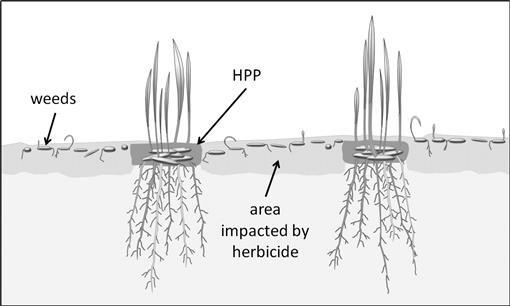

Many factors influence the exact amount of carbon that can be taken up by a seagrass meadow, but rough calculations show that if we restore one hectare of seagrass, it would correspond to at least ten hectares of dry-land forest and even as much as 40. As a result the re-establishment of these meadows will make it possible to greatly increase the carbon storage potential of our oceans. Seagrass meadows are, for the most part, in recession across the globe due to human activity. Seagrass can grow at depths of up to 90m and is an important part of the food web. This oxygen-free sediment traps the carbon in the dead plant material which may then remain buried for hundreds of years. Seagrass plants have an excellent capacity for taking up and storing carbon in the oxygen-depleted seabed, where it decomposes much slower than on land. We need to create vast underwater meadows While forests and tundras are losing capacity for carbon storage, another often forgotten ecosystem may hold the answer: seagrass. However, rising temperatures are melting the tundra in many parts of the world, releasing stored carbon back into the atmosphere, and as a consequence its capacity to store carbon is decreasing. As a large part of the carbon is stored in the frozen soil and so is harder to disturb, it makes a very efficient sink. Tundra is found in polar or mountainous regions where temperatures are too low for trees to grow, and the landscape is dominated by grasses or moss. In fact, new research by colleagues and I has found that such forests are actually only the fifth most efficient ecosystem in the carbon storage cycle behind salt marshes, mangrove forests, seagrass meadows and, best of all, tundra. Stores lots of carbon – but mostly above ground. So while a forest is a moderately efficient carbon sink, its capacity to retain carbon in the forest floor is limited. However, once chopped down and turned into firewood, the carbon in those trees will be released and emitted back into the atmosphere as CO₂.

Given the sheer volume of all the trees contained in tropical forests, it’s no wonder most people imagine such forests when they think of a carbon sink. For example, as long as a tree lives it will absorb and store carbon. In principle, all living organisms – all animals, plants, algae and bacteria – consist of carbon and so function as a carbon sink. Ecosystems capable of absorbing and storing large amounts of carbon dioxide know as “carbon sinks” are ideal for this. It is therefore critical that we find ways to drastically reduce the amount of pollutants in the atmosphere. Although efforts are already being made to reduce the production of greenhouse gasses, they are by most estimations not enough. According to the UN’s Intergovernmental Panel on Climate Change, urgent and unprecedented changes are needed to avoid a climate change catastrophe.


 0 kommentar(er)
0 kommentar(er)
